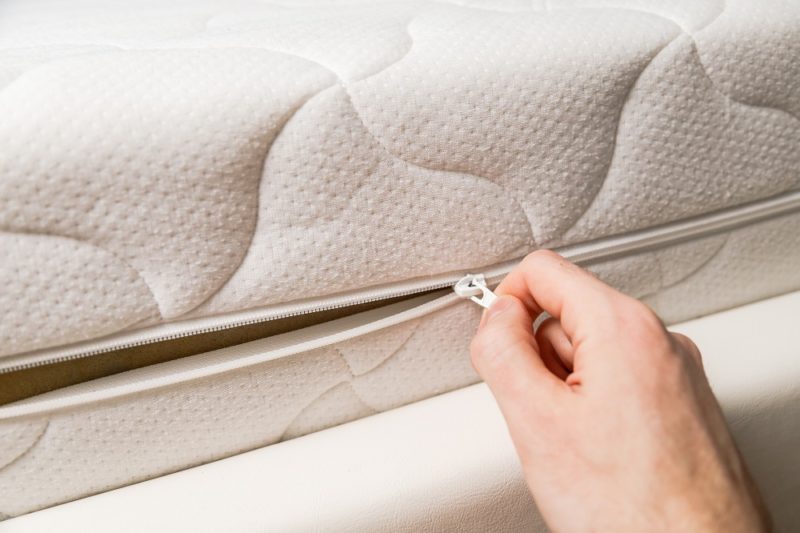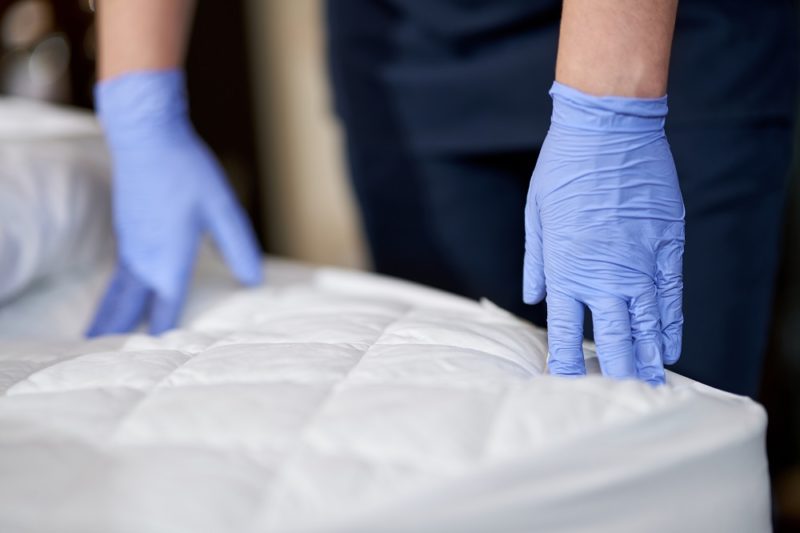Hidden Toxic Chemicals In Mattresses That You Should Avoid
While most people consider pollution an external issue that they can escape from once they enter their homes, internal pollution may be even more harmful and persistent. Americans spend 87% of their time indoors, where certain pollutants are found in much higher quantities than outdoors, up to 5 times higher in some instances, according to the Environmental Protection Agency (EPA). While this is a problem with most internal spaces, bedrooms are especially problematic because of the amount of time we spend there.
“The bedroom may be a major source of a variety of air pollutants, many of which can have serious consequences for one’s health,” says Gregory A. Cade, industrial hygienist and attorney specializing in defective or hazardous products and chemical exposure. He advises reducing—as much as possible—the potential toxins in your bedroom.
After all, the bedroom is the one area in your home where you spend most of your time. However, it’s essential to realize that it may contain high concentrations of potentially harmful pollutants.
The glass fibers used in conventional mattresses as fire retardants
It’s a well-known fact that sleeping accounts for a significant portion of your life. When the light goes out, you’re in full contact with your mattress. A bed laced with hazardous substances may have a detrimental effect on your sleep and health.

Several consumers have filed a class-action lawsuit claiming that their Zinus mattresses polluted their homes with fiberglass particles to the point that only professional cleaners can remove them. Many consumers complained that small fiberglass fragments spread throughout the house when they removed their cover for cleaning, contaminating everything from the flooring to the clothing, furniture, washing machines, and even the air ducts in the HVAC system. Worse, once fiberglass fragments have emerged from a mattress, they are almost impossible to clean.
Chemical Off-Gassing
Most mattresses that include questionable chemicals in their manufacturing process will release a strong odor right after unpacking it. The smell is especially prominent in those “bed-in-a-box” types of mattresses that are being delivered right to your doorstep, rolled up and vacuum-sealed in a compact and convenient form. The lack of airflow during storage and delivery keeps the chemicals used from releasing into the environment up until the moment you unpack it into your bedroom. The process is called off-gassing, which you can recognize due to its distinct odor, usually associated with many different new household products. Chemicals released through off-gassing may include formaldehyde, benzene, toluene, and ammonia.

Chemical Flame Retardants
Besides fiberglass, many manufacturers opt to use a chemical-based solution to meet the flammability standards legislated by the government. However, no regulations require the mattress companies to label the chemicals used to meet those standards. These may include highly toxic flame retardants such as:
- Polybrominated Diphenyl Ethers (PBDEs)
- Boric acid
- Melamine
- Antimony
- Decabromodiphenyl oxide
- Vinylidene chloride

Things to look for when buying a healthy, non-toxic mattress
Fortunately, there are many natural and safe flame retardants out there that manufacturers can use for a mattress to pass the flammability tests. However, these alternatives are often more costly than chemical-based solutions, which is why finding a completely organic mattress that uses only natural materials at a reasonable cost may prove to be a challenge. This is where you have to do some research of your own and figure out the best option for yourself while considering different aspects such as level of comfort, safety, and price.

If you’re only interested in organic ones, look for relevant and reliable organic mattress certifications such as Global Organic Textile Standard (GOTS), Global Organic Latex Standard (GOLS), Greenguard Gold, and Oeko-Tex Standard 100. Check the label, the manufacturer’s website, and other online trusted resources and make sure the mattress only includes organic materials such as cotton, wool, and latex.
How to protect yourself if you’re sleeping on a potentially toxic mattress
Many manufacturers provide safe, organic mattresses at affordable prices. However, organic materials will always be more expensive than their traditional counterparts. If switching to a fully organic bed is outside your budget right now, you can still take measures to minimize the potentially harmful effects of a traditional mattress and help you create a healthier sleeping environment.
- Use a polyethylene mattress cover that can stop your mattress from off-gassing and act as a barrier between you and the chemicals inside your bed.
- Let your new mattress sit for a couple of days in a well-ventilated room—preferably outside—before using it.
- If you suspect your mattress uses fiberglass as a fire retardant solution, do not remove the cover under any circumstance. Inspect your mattress regularly and make sure there are no tears or rips on the outer cover. Otherwise, you risk exposing yourself and your whole household to millions of fiberglass shards that can be nearly impossible to remove and put your health at risk.

About the author:
Jonathan Sharp is the Chief Financial Officer and Director of Claims at the Environmental Litigation Group P.C., an Alabama-based law firm that was founded in 1990 with the mission of advocating for injured individuals and families who large corporations have harmed to recover the compensation they deserve.









